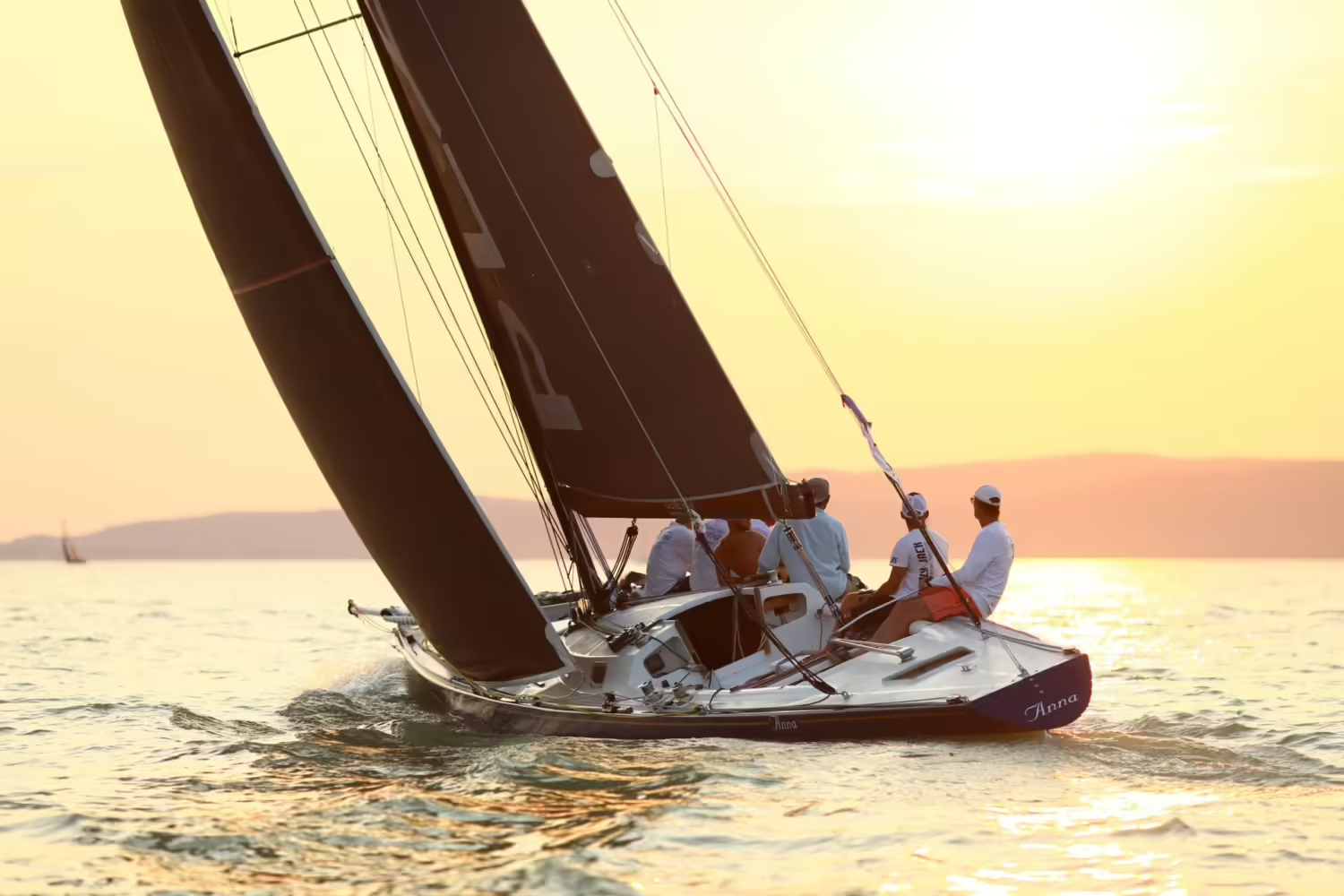
70er Skerry Cruiser
The Story Began in the Early 1990s
After the political changes, funding for Hungarian sailing started to trickle in, but it was still insufficient for the latest models that had proven themselves abroad to win the laurels (although the first such story, the acquisition of the Manuál (11M OD), happened precisely in 1993). In these circumstances, Dini and his team turned to the best available traditions, the classic cruisers, to develop a winning boat for Lake Balaton by renewing them. Originally, the plan was to base the boat on the 40-foot cruiser named Glória, which had already competed in the 1936 Blue Ribbon Regatta.
The original plans involved building a plastic boat using a template from Glória or Tabu, but Dini eventually redesigned the hull, the keel, separated the rudder from the keel, and moved the mast backward. The result was not only stunningly beautiful but also effective: thanks to its lighter weight, longer waterline, lower center of gravity, and a sail area twice as large as that of the old 40-footers, the boat became extremely fast.
According to a contemporary description by Leho (Hajó magazine, January 1996), the new 70-footer could sail a few degrees less upwind than the classic 40-footers, but it more than made up for this with its speed. In good wind conditions, it could even exceed its theoretical speed calculated from the length of the hull, meaning it could plane on the water in broad reaches, something the older cruisers could hardly achieve.
The 70-Foot Class
Even by today’s standards, it’s astonishing that within just three years, seven 70-foot cruisers were completed at the Pauger Workshop, with the last one, Batman Forever, featuring a canting keel. The boat was so good that the 40-foot cruiser class didn’t accept it: the new boats were so much faster than the old ones that the wooden boat owners didn’t want to compete with them, which is understandable. Thus, the new class named the 70-foot class was born, which now has 9 boats, when they are active. By name: Orpheus, Anna, Capella, Pannónia, Irokéz, Honfoglaló, Bankonzult, Gulipán, Batman Forever.
Today, the 70-footers don’t really stand a chance against the fast, flatter-bottomed speed machines, trapeze dinghies, and catamarans, but in a particularly strong-wind Blue Ribbon Regatta, they could still surprise, because they are stable, need to reef relatively late, and in a heeled state, their waterline extends. Unlike other keelboats, their wetted surface deforms less, so they don’t become hopelessly luwward.
